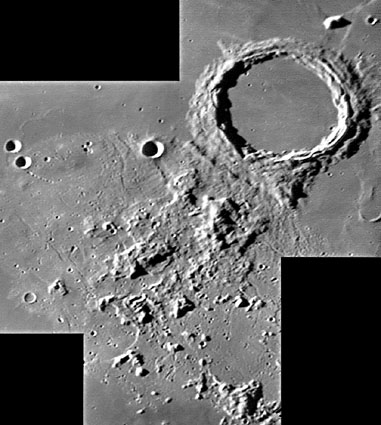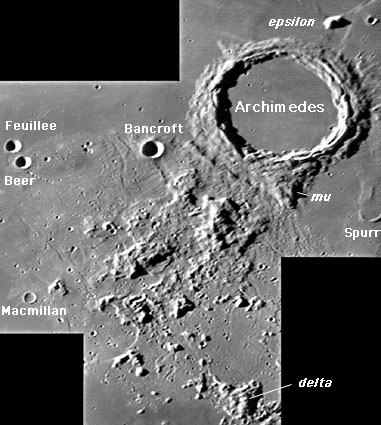Difference between revisions of "August 31, 2004"
| Line 28: | Line 28: | ||
<p><b>Related Links: </b><br> | <p><b>Related Links: </b><br> | ||
[http://www.lpi.usra.edu/meetings/LPSC98/pdf/1352.pdf Geology and Composition of the Apennine Mountains] <br> | [http://www.lpi.usra.edu/meetings/LPSC98/pdf/1352.pdf Geology and Composition of the Apennine Mountains] <br> | ||
| − | [ | + | [http://www.lpi.usra.edu/research/lunar_orbiter/images/img/iv_109_h3.jpg Lunar Orbiter IV View] </p> |
<p><b>Yesterday's LPOD:</b> [[August 30, 2004|Are Central Peaks Volcanoes?]] </p> | <p><b>Yesterday's LPOD:</b> [[August 30, 2004|Are Central Peaks Volcanoes?]] </p> | ||
<p><b>Tomorrow's LPOD:</b> [[September 1, 2004|Hundred Year Old Hevelius]] </p> | <p><b>Tomorrow's LPOD:</b> [[September 1, 2004|Hundred Year Old Hevelius]] </p> | ||
Revision as of 22:44, 8 February 2015
Archimedes and his Mountains
Image Credit: K.C. Pau |
|
Archimedes and his Mountains Archimedes is the largest crater inside the Imbrium Basin (Sinus Iridum is bigger but its on the rim rather than inside). But I don't think it is observed much because its floor lacks a central peak and its small pits, unlike Plato's, haven't become known as a test for seeing and optics. But south of Archimedes is an area that is even less often observed. The Archimedes Mountains are two crude arcs that run NE to SW, with a gentle curve inwards towards Imbrium. These mountains appear to be part of a 790 km wide inner ring of the Imbrium Basin, probably formed as a mega-terrace, as massive arcs of land slumped toward the hole created by the Imbrium impact. The mountains are in the midst of an area of low hills and small craters. This surface, lighter than nearby mare, is an area of KREEP volcanism called the Apennine Bench. This volcanic material was erupted onto the floor of the Imbrium basin and later was surrounded by normal mare basalts. Technical Details: Related Links: Yesterday's LPOD: Are Central Peaks Volcanoes? Tomorrow's LPOD: Hundred Year Old Hevelius |
Author & Editor: |
COMMENTS?
Register, Log in, and join in the comments.





